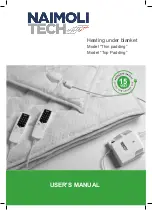
2
Safety
16
User Guide
Important Safety Warnings
Before using the Agilent LTM system the user must be familiar with the operation and safety of
the Agilent 8890 GC on which the LTM system is installed. Access the GC manuals using the
Browser Interface, or download them from the Agilent web site.
Some parts of the LTM system carry dangerous
voltages
If the LTM system is connected to a power source potentially dangerous voltages exist on:
•
The power cable between the LTM power supply and the line power, the LTM power
supply, the wiring from the LTM power supply to the LTM electronics enclosure,
everywhere within the electronics enclosure, and the wiring between the LTM electronics
enclosure and the column modules.
WARNING
The electronics and power supply are shielded by covers and the external wiring by insulated
coverings. With the covers in place, it should be difficult to accidentally make contact with
dangerous voltages. Unless specifically instructed to, never remove a cover unless the LTM
power supply is disconnected from its power source.
WARNING
If the power cord insulation, or insulation on any of the other external cables is frayed or
worn, the cord or cable must be replaced. Contact your Agilent service representative.
Electrostatic discharge is a threat to GC electronics
The printed circuit (PC) boards in the LTM system can be damaged by electrostatic discharge.
Do not touch any of the boards unless it is absolutely necessary. If you must handle them,
wear a grounded wrist strap and take other antistatic precautions. Wear a grounded wrist
strap any time you must remove the LTM electronics enclosure cover.
LTM parts are dangerously hot
WARNING
Many parts of the externally mounted LTM column module and the interior of the LTM oven
door including the column unions operate at temperatures high enough to cause serious
burns.
You should always cool the LTM system column modules and the GC oven and oven
accessories to room temperature before working on them. They will cool faster if you first set
the temperature of the heated zone to room temperature. Turn the GC and the LTM system
zones off after they have reached a safe setpoint. If you must perform maintenance on hot
parts, use a wrench and wear thermally protective gloves. Whenever possible, cool the part of
the instrument that you will be maintaining before you begin working on it.
















































